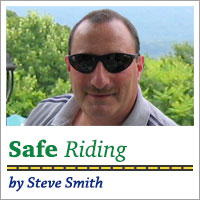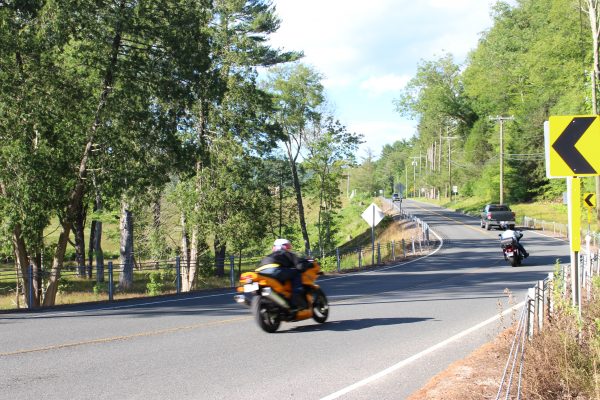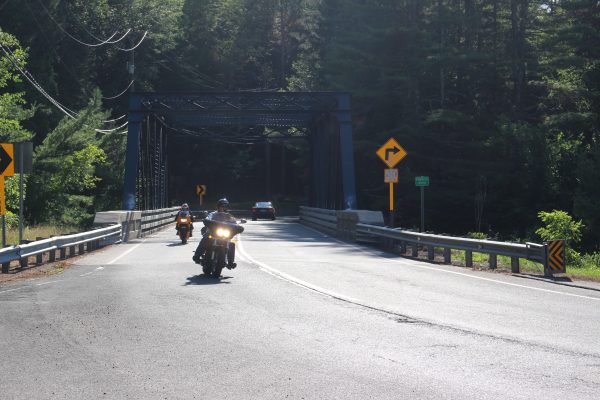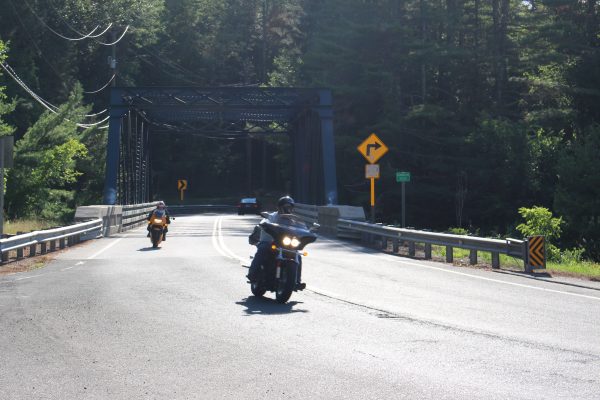Each year, many entry level riders hit New England roadways having passed rider education courses and obtained an “M” on their licenses, and that’s the proper way to do it. Learning from friends, spouses or “Uncle Bob” is probably not the best choice to learn how to ride because t here is much more to riding than just the mechanics of how to operate the controls. Passing a rider training course is only the first step.
here is much more to riding than just the mechanics of how to operate the controls. Passing a rider training course is only the first step.
What’s next? Getting your own bike, of course! That shiny beast looks awesome and the seller wants to … well … sell a bike. Before buying, it’s important to honestly assess your skill and experience and to choose a bike that is properly sized and powered. You should be able to have both feet flat on the ground, and reach and operate all controls comfortably.
Larger bikes tend to be heavier, which require more strength and skill to maneuver. If it feels too heavy, more than likely it is. On more powerful and faster motorcycles new riders can quickly find themselves beyond their abilities with a slight twist of the wrist.
Also before buying, factor the cost for decent riding gear into the bike purchase price, so that it is not an afterthought or completely neglected.
Up to this point, you’ve gained a lot of knowledge and not a lot of experience. One without the other can be dangerous. You will need to acclimate to your motorcycle and hone your skills.
In the beginning, ride the back roads to avoid congested areas and traffic. Stay away from busy state roads or highways until you can comfortably ride with the pace of traffic. Riding too slowly – below the posted speeds – can put you in a situation where you are dangerous to yourself and others.
New riders should maintain extra following distance beyond the two-second recommendation to allow time and space to react to possible situations and hazards. Work on developing smooth throttle and brake control, and being able to operate all controls without having to look at them. Even a momentary distracted glance away from the road can end badly.
One thing many new riders should know is how far the bike will go on a tank of gas. Most bikes do not have fuel gauges and it is not fun and can be potentially dangerous to run out of fuel while riding.
Develop a good sense of traffic and 360-degree situational awareness. Search ahead well and scan your mirrors for potential hazards. Turn your head to check blind spots before changing lanes.
Be visible. There are many ways to do this including wearing bright high-viz colors and positioning yourself on the road in a way that allows other vehicles to see you easily. If you suspect a driver does not see you, use your horn, but don’t rely on it.
New riders should avoid carrying passengers, and only do so after they have gained sufficient skills as a solo rider. Another thing to avoid is group rides. Peer pressure and pack mentality can lead to riding above your ability and skill level.
As MSF states, riding a motorcycle is serious fun. It’s a gentle reminder that things can go south in a blink of an eye. Every new rider is different. Take the time you need to relax and enjoy the ride.
 Ride CT & Ride New England Serving New England, NYC and The Hudson Valley!
Ride CT & Ride New England Serving New England, NYC and The Hudson Valley!





